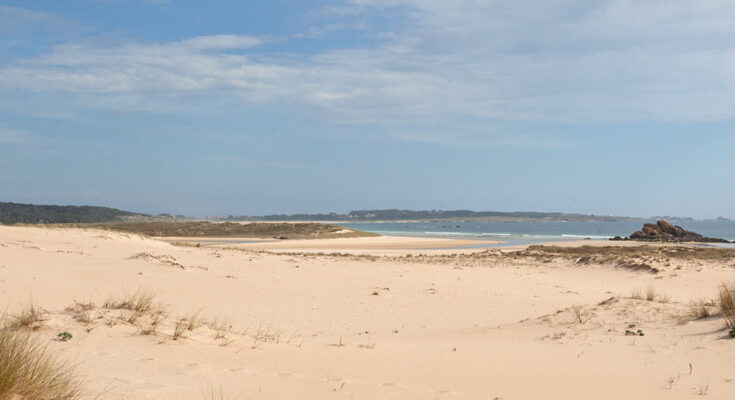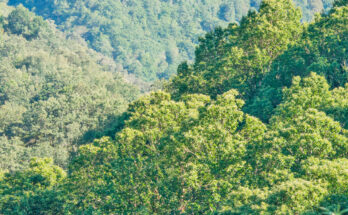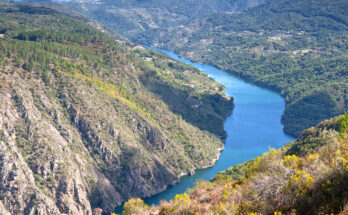Traveling to paradise is always a good idea, but a bit abstract… Don’t know where to go? Here are four very specific paradises for an immersion in nature in the province of A Coruña:
Fragas do Eume. Surely we have heard that here is the best preserved Atlantic forest in Europe. Well, you have to see it! Here it is, in the Fragas, in a mixture of deciduous trees, very varied, riverside, that accompany the Eume in its lower course, before ending in the estuary and flowing into the estuary of Ares. The company is provided by alders, oaks, chestnut trees, ash trees, birches, holly trees, strawberry trees, ferns (with representation of up to 28 species)… that make the Fragas home to many animal and plant species, some of great ecological value for being in danger of extinction.
This natural park is distributed among the municipalities of Cabanas, A Capela, Monfero, Pontedeume and As Pontes de García Rodríguez, occupying, at the moment, 9,125 ha. To make the most of the visit, it is advisable to visit one of the interpretation centers: the Fragas do Eume Interpretation Center, in Andarúbel; the Visitors Center, in Monfero, or the Interpretation Center and the Ethnographic Museum of A Capela.
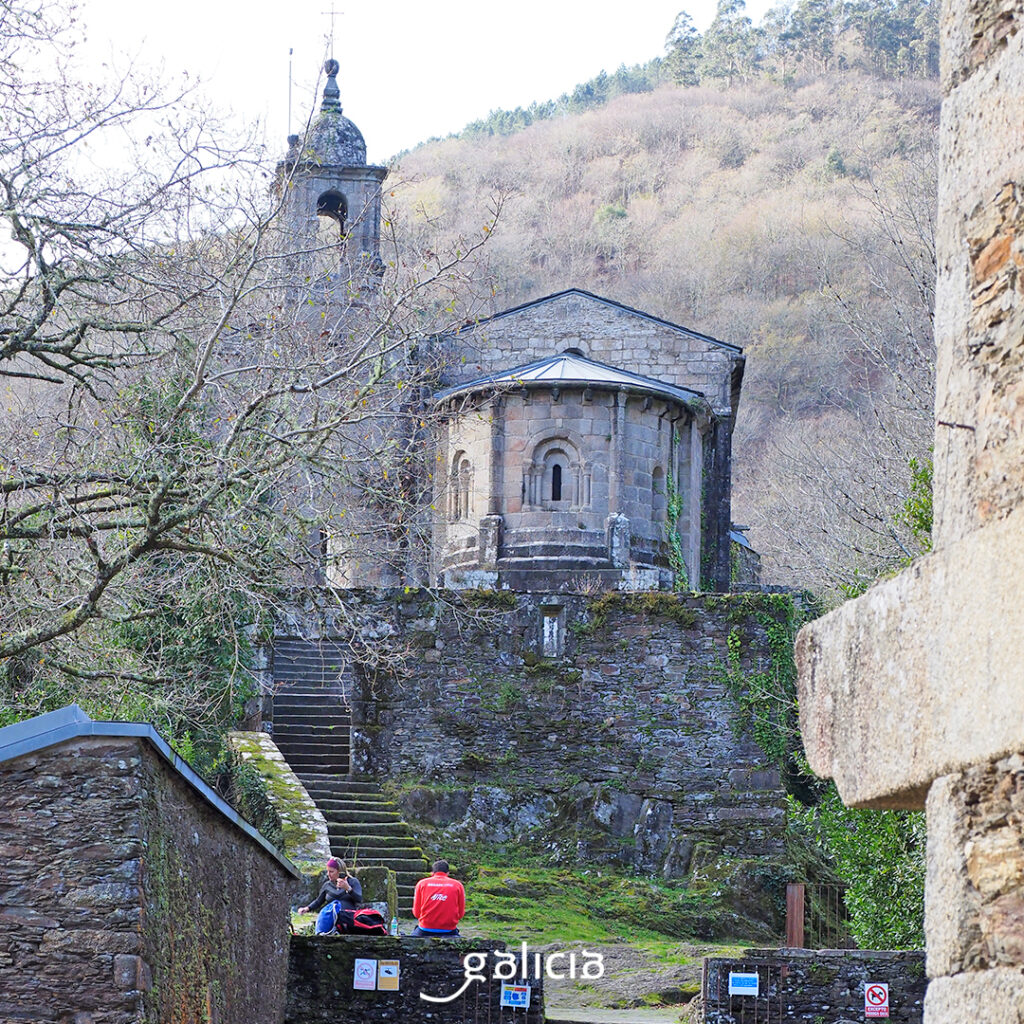
Two important architectural works are hidden in the Fragas: the monastery of San Xoán de Caaveiro, standing since the tenth century, and the monastery of Santa María de Monfero, also of medieval origin, which boasts an exquisite baroque facade with chesswork unique in Galicia.
As it is known, to know the places you have to walk them. Well, we have here up to 8 well signposted routes not to get lost. The best known are the Camiño dos Encomendeiros, which passes by the bridges of Cal Grande and O Fornelo, the monastery of Caaveiro and the medieval bridge of Santa Cristina, and the Camiño dos Cerqueiros, which goes up to the viewpoint of A Carboeira.
And, with so much water in sight, can’t we take the canoe? of course! You can navigate the Bermuz river up to the confluence with the Eume, either with our equipment or renting it there. By the way, you can also rent electric bikes.
As Mariñas coruñesas e Terras do Mandeo. The 116,724 ha of this Biosphere Reserve extend through the municipalities of Abegondo, Aranga, Arteixo, Bergondo, Betanzos, Cambre, Carral, Coirós, Curtis, Irixoa, Miño, Oleiros, Oza-Cesuras, Paderne, Sada and Sobrado. It has a varied coastal and mountain area, with a rich vegetation and up to 200 species of protected fauna. And not everything is nature, we also find samples of rock art, dolmens, burial mounds, petroglyphs, forts …. There are even remains of the Roman Via XX, the itinerary of Antoninus, which went from Astorga to Oporto. There are also large manor houses, such as Mariñán or Meirás, and religious architecture, such as the church of San Francisco de Betanzos or the Cistercian monastery of Sobrado.
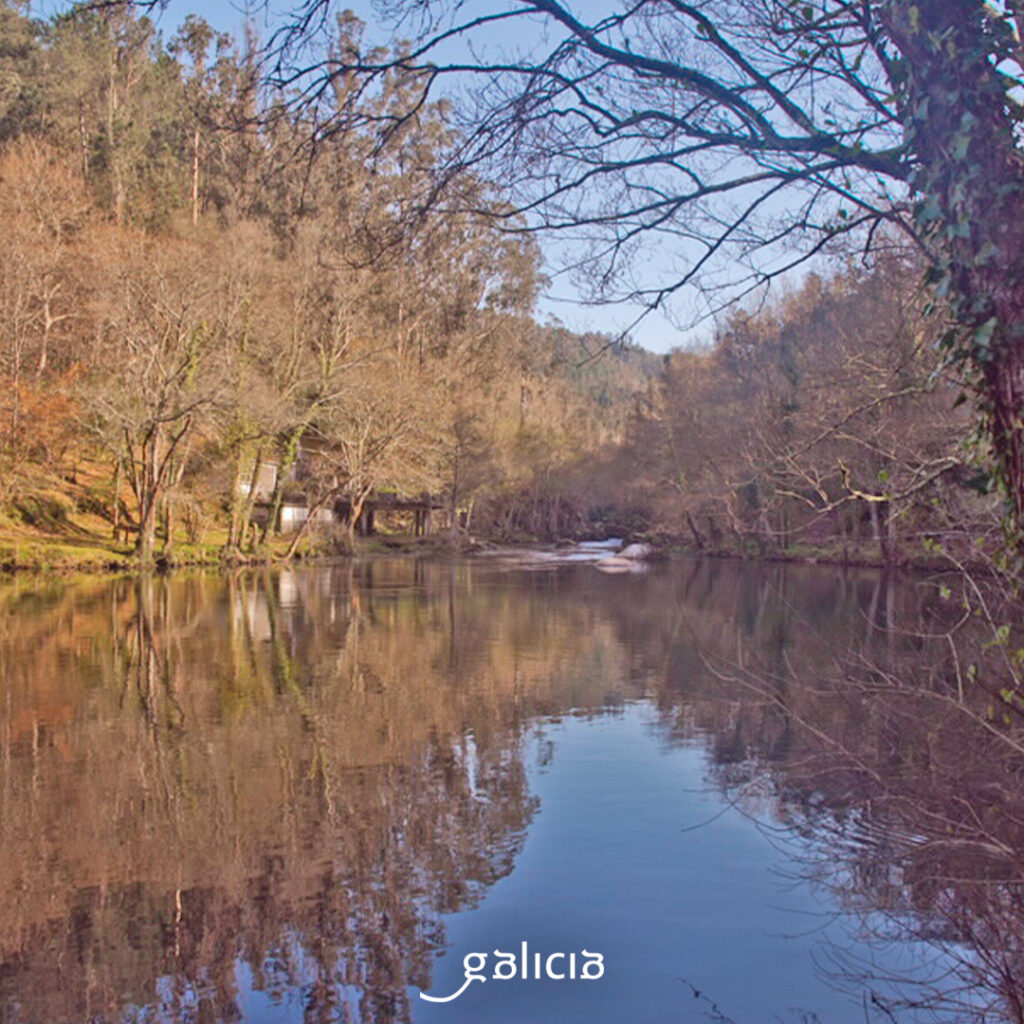
With so many hectares and such a good location, there are many places to visit. Any examples? The viewpoint of A Espenuca, the waterfall of A Rexidoira, the Xalo Mountain, the Sobrado Lake, the city of Betanzos… There are many hiking trails, some specific, such as ornithological ones. The reserve also offers sustainable tourism experiences, such as agri-food routes, electric catamaran routes with a tasting menu on board… All the support for the sustainable development of the reserve was rewarded with the ecotourism destination certification, the first awarded in Galicia.
Penedos de Pasarela e Traba. Between the municipalities of Vimianzo and Laxe, along 2 km, from A Torre da Moa to the place of O Penedo, there are granite formations like enchanted giants. The highest crags are A Torre da Moa, A Galla da Pena Forcada and A Cachucha. Since 2008, this is a protected landscape, and thank goodness, because the value of this artistic pink granite had always tempted the quarries.

There is a linear route that goes from Pasarela to Traba that makes it easy to approach the most famous stone characters: A Cachucha, O Cantor, O Camello, As cascudas, O Coello, A Tartaruga, O Pallaso, A Man, A Osa, A Dama da Costa da morte, A Eira, o Bico, A Cabeza de Porco, O Monolito…. These rocks formed 300 million years ago at a depth of 20 km trigger our imagination, and make the visit doubly enriching. This is a very special place, sculpted by the wind and by time, “onde Henry Moore ficaría sen fala… e o Chillida, seguramente, dedicaríase a outra cousa” (where Henry Moore would be speechless… and Chillida, surely, would dedicate himself to something else) (M. Rivas, 1992).
Corrubedo dune complex and lagoons of Carregal and Vixán. The richness of this dune system, with the largest mobile dune in the northwest peninsular (1 km long, 250 m wide and 15 m high) and a wetland and lagoons that bring together many types of habitats of animal and plant species, made it was recognized as a national park in 1992. It is located between the estuaries of Arousa, Muros and Noia, in the municipality of Ribeira, and extends over 996 ha. The park is conditioned with wooden walkways so that we can appreciate all its environmental values without affecting them.
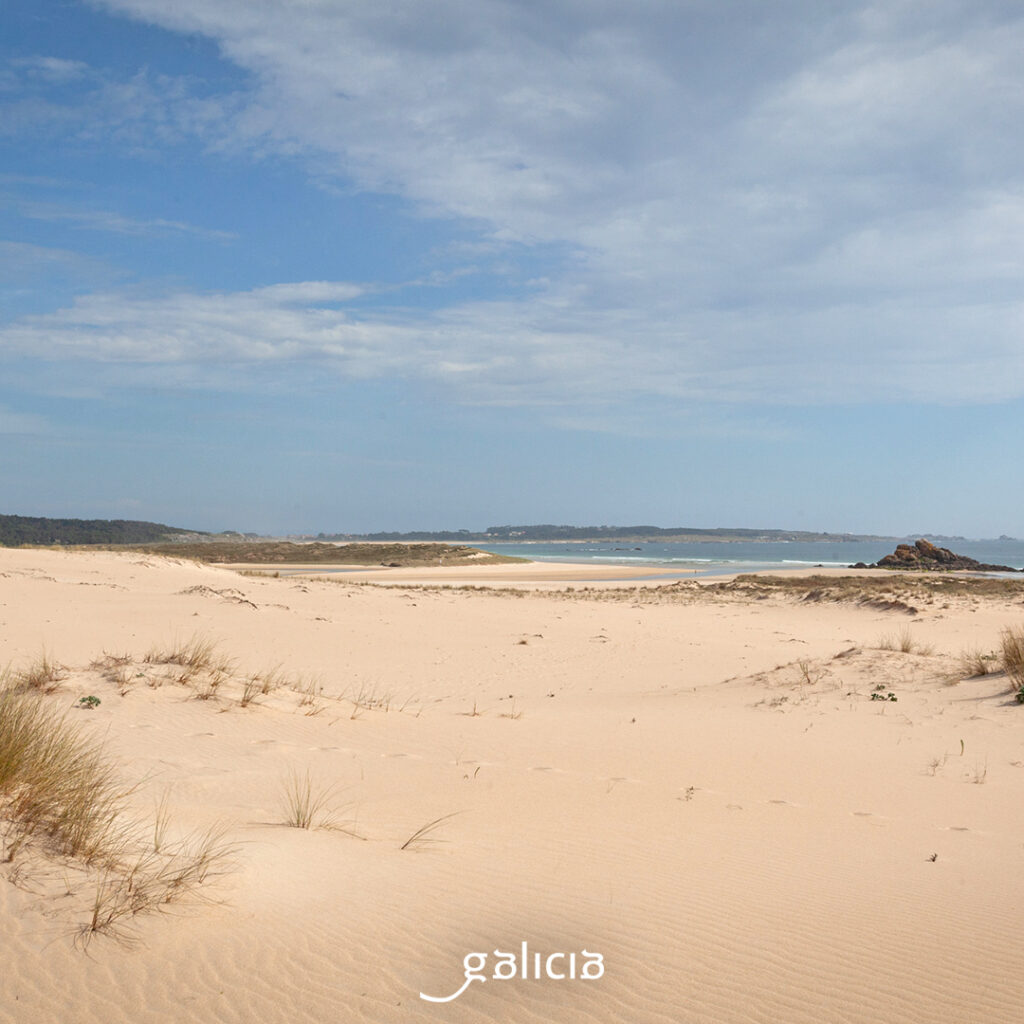
The lagoons and wetlands are home to more than 250 plant species and many animal species, mainly waterfowl. What is unique is that the Vixán lagoon is freshwater, coming from the O Vilar stream, and the Carregal lagoon is saltwater.
To get a broader perspective of the park, the best way is to climb to the viewpoints of A Pedra da Ra and O Castro da Cidá. As can be deduced from the name, we will find remains of forts, and also mills and even tile ovens of the nineteenth century.

